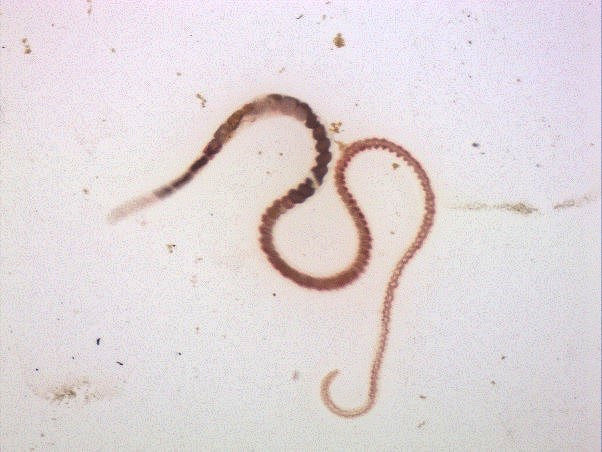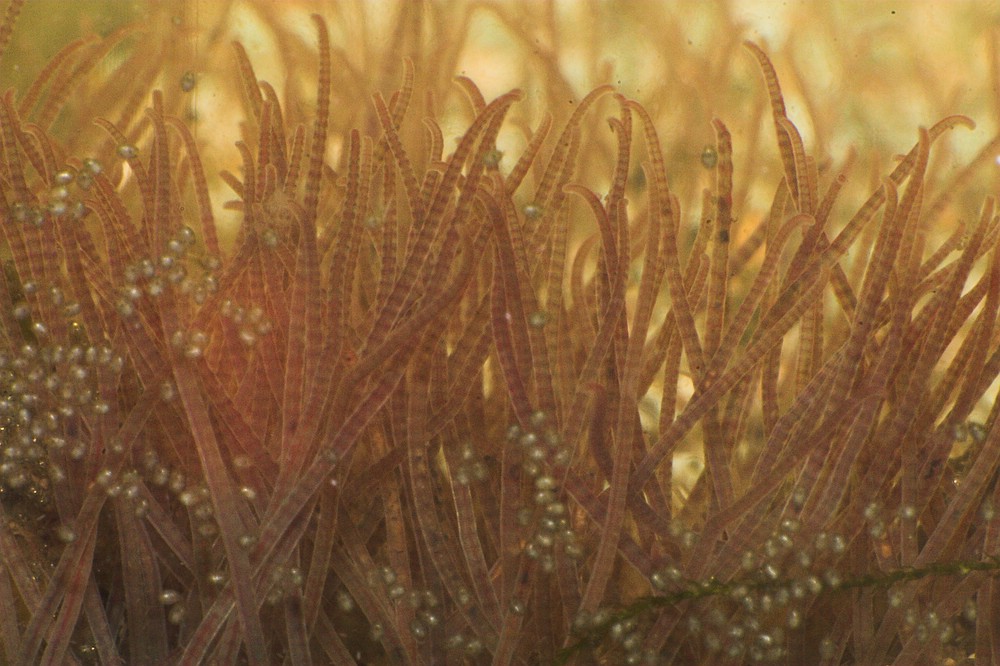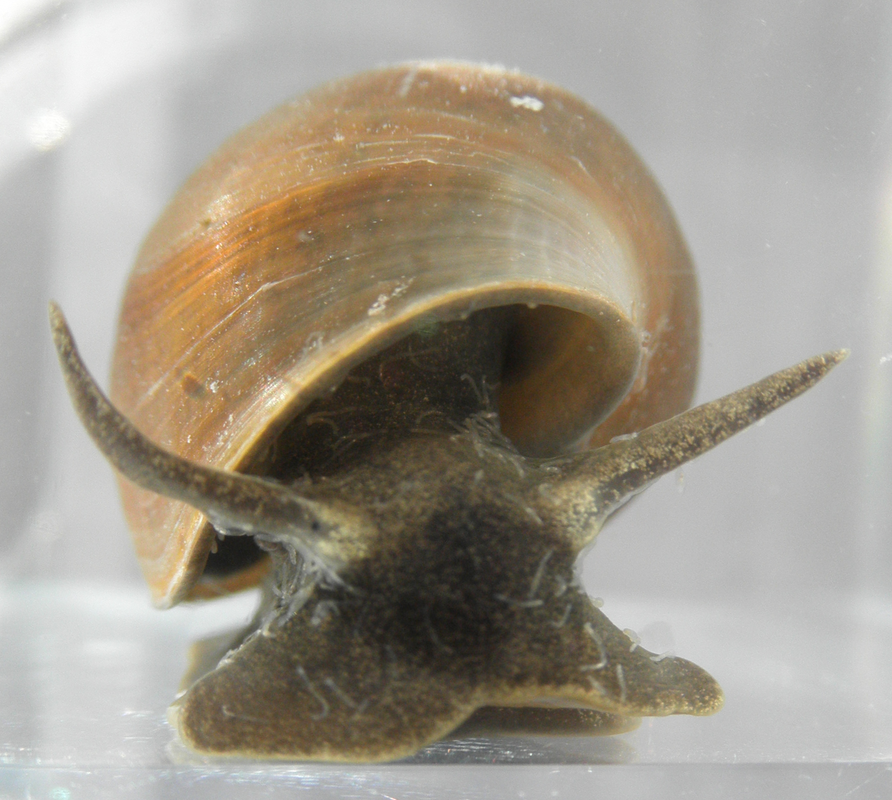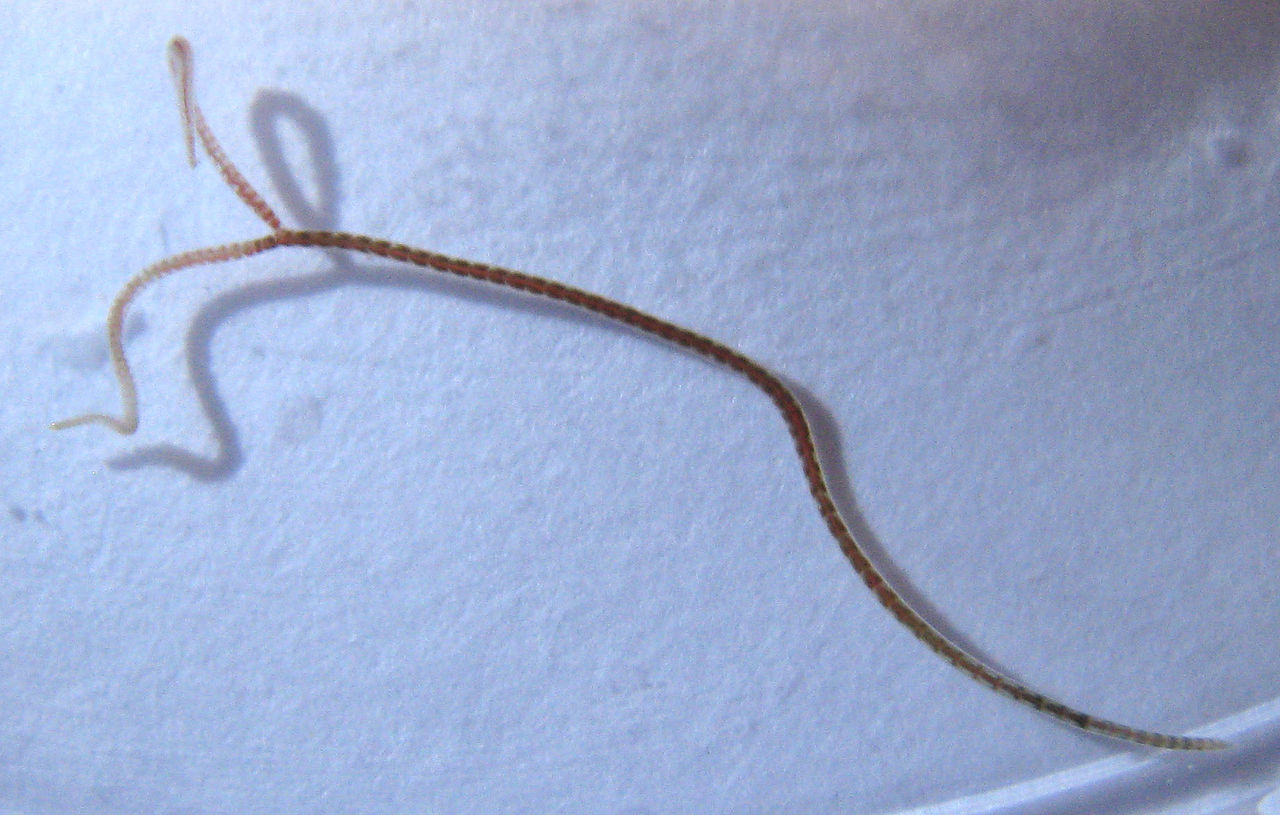- Home
- Garden Wildlife
- Annelida
- Pond worms
Pond worms
This page is about the small earthworm-related oligochaete worms found in fresh water. It's not a great title, because lots of other sorts of "worms" can be found in ponds, including nematode worms, nematomorphs, flatworms and leeches, while some aquatic insect larvae can appear quite worm-like. Even terrestrial oligochaetes, earthworms and white worms, can occasionally be found in ponds, and we mention one species below.
Non-leech pond anellids are not very well studied, and there are few if any mentions of them in garden ponds. It would be good if more amateur naturalists with ponds looked for them, and they may be rewarded by finding quite a variety of examples.
Family Naididae
This includes several genera of small aquatic worms previously classified in the Tubificidae. Many have haemoglobin, making them red in colour and capable of coping with low oxygen concentrations in sludge or polluted waters. Most of them reproduce mainly asexually by fragmentation or budding, sometimes forming chains of linked individuals. Common species include red bodied Limnodrilus hoffmeisteri, and Tubifex species "sludge worms" which are cultured commercially for fish food, and usually reproduce sexually, forming cocoons as with earthworms.
Chaetogaster diaphanus is rather different, up to 15mm long and appearing short and chunky with relatively few segments. It is a colourless and transparent predator on small aquatic animals. The related Chaetogaster limnaei is only 1-5mm long, and lives on the bodies or shells of pond snails, especially Lymnaea and ramshorn species. They are not parasitic, but feed on algae and tiny animals like rotifers from their molluscan vantage point.
Family Lumbriculidae
This is a family of mainly freshwater oligochaetes, confusingly named because they are not related closely to the terrestrial Lumbricus. Lumbriculus variegatus is up to 8cm long, red-bodied with a greenish irridescence, sits rooted head-down in muddy substrate, in the same was as - and often accompanying - Tubifex. It is fragile when handled, and reproduces by fragmentation with each segment capable of regenerating a whole worm.



Top left: Limnodrilus hoffmeisteri. Top right: colony of Tubifex worms in fish tank, heads buried in the substrate, tails waving above.
Left: Tiny Chaetogaster limnaei on pond snail, most obvious on the snail's foot on the right.

Family Lumbricidae
Eiseniella tetraedra the square-tailed worm is in the same family as the earthworm Lumbricus terrestris. It is red, 2-8cm long, and found in mud and under stones at the edge of ponds and rivers, and also in wet soil. There are good photos of this species on NatureSpot.
Role of pond worms in gardens
We really don't know enough about the ecology of these worms in garden ponds to comment usefully, but they will be significant in detritus processing and will be food for larger invertebrate species such as dragonflies. Although species are hard to tell apart, this is a group where an amateur could make a useful contribution to knowledge.
Other sources of information
Websites
Website of the Earthworm Society of Britain
Books and monographs
Schmelz R. and and Collado, R., 2010 A guide to European terrestrial and freshwater species of Enchytraeidae (Oligochaeta). Soil Organisms 82: 1–176
Sherlock, E. (2012) Key to the earthworms of Britain and Ireland. A Field Studies Council AIDGAP key
Ladle M., Bird G.J. (1980) Aquatic Oligochaeta of Southern England. In: Brinkhurst R.O., Cook D.G. (eds) Aquatic Oligochaete Biology. Springer, Boston, MA. https://doi.org/10.1007/978-1-4613-3048-6_9
Page created by Steve Head
Lumbriculus variegatus appearing two-tailed because it is regenerating a new worm from a damaged segment.
Pond worms
This page is about the small earthworm-related oligochaete worms found in fresh water. It's not a great title, because lots of other sorts of "worms" can be found in ponds, including nematode worms, nematomorphs, flatworms and leeches, while some aquatic insect larvae can appear quite worm-like. Even terrestrial oligochaetes, earthworms and white worms, can occasionally be found in ponds, and we mention one species below.
Non-leech pond anellids are not very well studied, and there are few if any mentions of them in garden ponds. It would be good if more amateur naturalists with ponds looked for them, and they may be rewarded by finding quite a variety of examples.
Family Naididae
This includes several genera of small aquatic worms previously classified in the Tubificidae. Many have haemoglobin, making them red in colour and capable of coping with low oxygen concentrations in sludge or polluted waters. Most of them reproduce mainly asexually by fragmentation or budding, sometimes forming chains of linked individuals. Common species include red bodied Limnodrilus hoffmeisteri, and Tubifex species "sludge worms" which are cultured commercially for fish food, and usually reproduce sexually, forming cocoons as with earthworms.
Chaetogaster diaphanus is rather different, up to 15mm long and appearing short and chunky with relatively few segments. It is a colourless and transparent predator on small aquatic animals. The related Chaetogaster limnaei is only 1-5mm long, and lives on the bodies or shells of pond snails, especially Lymnaea and ramshorn species. They are not parasitic, but feed on algae and tiny animals like rotifers from their molluscan vantage point.



Top left: Limnodrilus hoffmeisteri. Top right: colony of Tubifex worms in fish tank, heads buried in the substrate, tails waving above.
Left: Tiny Chaetogaster limnaei on pond snail, most obvious on the snail's foot on the right.
Family Lumbriculidae
This is a family of mainly freshwater oligochaetes, confusingly named because they are not related closely to the terrestrial Lumbricus. Lumbriculus variegatus is up to 8cm long, red-bodied with a greenish irridescence, sits rooted head-down in muddy substrate, in the same was as - and often accompanying - Tubifex. It is fragile when handled, and reproduces by fragmentation with each segment capable of regenerating a whole worm.

Lumbriculus variegatus appearing two-tailed because it is regenerating a new worm from a damaged segment.
Family Lumbricidae
Eiseniella tetraedra the square-tailed worm is in the same family as the earthworm Lumbricus terrestris. It is red, 2-8cm long, and found in mud and under stones at the edge of ponds and rivers, and also in wet soil. There are good photos of this species on NatureSpot.
Role of pond worms in gardens
We really don't know enough about the ecology of these worms in garden ponds to comment usefully, but they will be significant in detritus processing and will be food for larger invertebrate species such as dragonflies. Although species are hard to tell apart, this is a group where an amateur could make a useful contribution to knowledge.
Other sources of information
Websites
Website of the Earthworm Society of Britain
Books and monographs
Schmelz R. and and Collado, R., 2010 A guide to European terrestrial and freshwater species of Enchytraeidae (Oligochaeta). Soil Organisms 82: 1–176
Sherlock, E. (2012) Key to the earthworms of Britain and Ireland. A Field Studies Council AIDGAP key
Ladle M., Bird G.J. (1980) Aquatic Oligochaeta of Southern England. In: Brinkhurst R.O., Cook D.G. (eds) Aquatic Oligochaete Biology. Springer, Boston, MA. https://doi.org/10.1007/978-1-4613-3048-6_9
Page created by Steve Head












